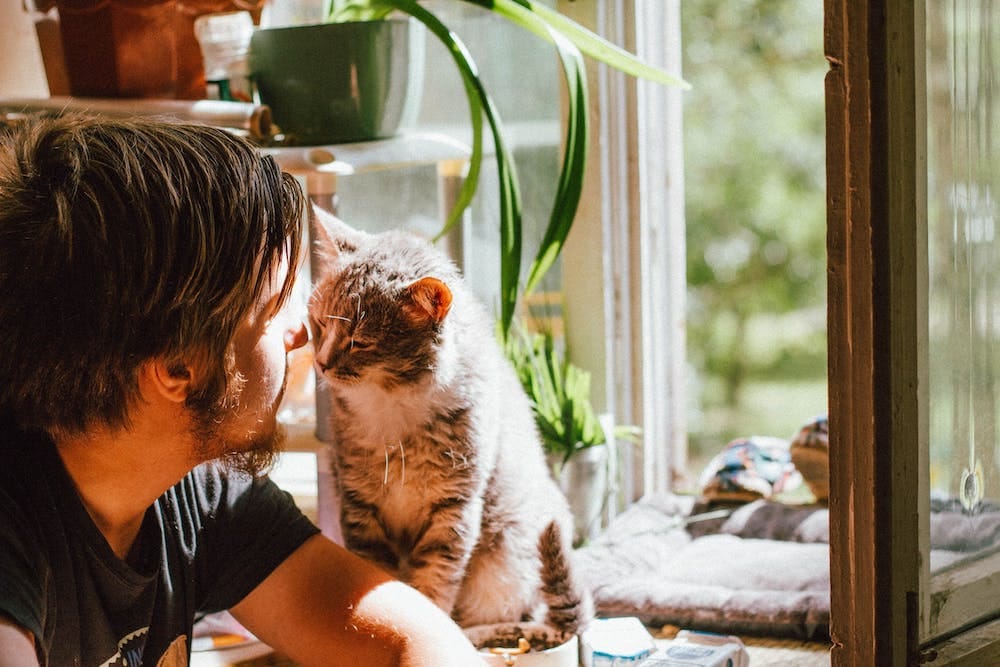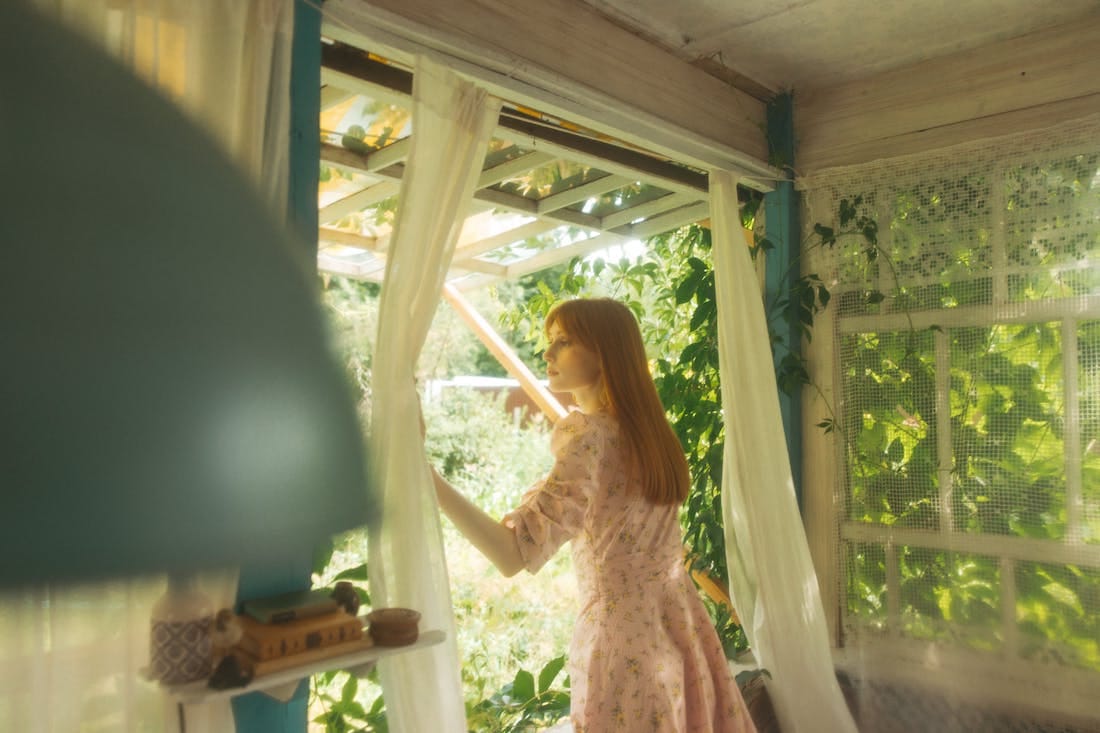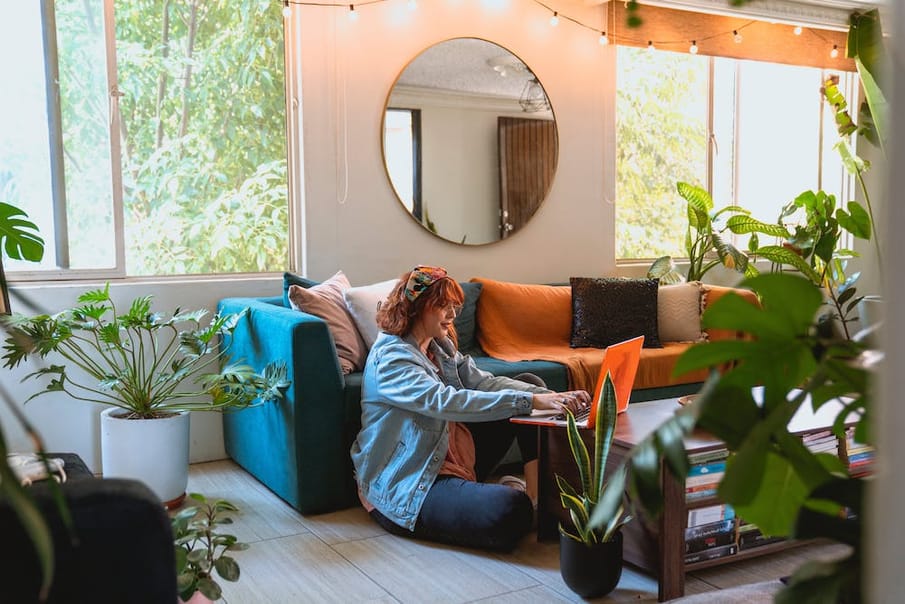Exploring why the art of consciously bringing the outside world into our homes is so good for our souls
We yearn for a connection with nature. It’s hard-wired into us and even has a name: biophilia. Meaning a love of life or living things, the term was coined by social psychologist Erich Fromm in 1964, before becoming popularised by E. O. Wilson, a biologist and Professor Emeritus at Harvard. However, designers and architects have taken this concept and, from it, a movement – biophilic design – has evolved.
The calming impact of the natural world is well documented. A study, published in the Journal of Environmental Psychology, exposed 120 subjects to a stressful film. Some were then shown a video of an urban setting, and some footage of the natural world. Physiological measurements were taken including heart period, muscle tension, skin conductance, and pulse transit time – which correlates with systolic blood pressure. The scientists found that stress recovery was quicker in the people who were exposed to the natural footage.
Biophilic design takes this and brings the impact (and benefits) of the natural world inside our homes. A Harvard study from 2018 tested the impact of a biophilic space on 28 participants, and found there was a decrease in blood pressure, along with short-term memory improvement, and an increase in positive emotions. The scientists even declared: “Our findings indicate that participants experiencing biophilic environment virtually had similar physiological and cognitive responses as when experiencing the actual environment.”

This, they argued, could be a tool for reducing stress in people when access to either a biophilic setting or natural environment is not possible. It is also an astounding testament to the impact of natural elements in design.
Our predecessors knew this. There are centuries of examples of how nature was made integral to the built environment. The Romans built homes with outdoor spaces, and created frescoes of flowers and trees on internal walls – and there are, of course, the legendary Hanging Gardens of Babylon.
Oliver Heath is a Sussex-based designer who has built his practice around biophilic design. His work brings together those decades of research into the physiological and psychological impact it has on us, and melds this with an environmental consciousness and a simple quest for beauty. He is, he argues, mending a disconnection from nature, which is a result of industrialisation, urbanisation, and even a religious aversion to the wilder side of nature.
“Since the Industrial Revolution, we’ve relatively turned our backs on rural dwelling and moved into city centres,” Oliver explains. “We found that we can live in ever tighter, geometric urban spaces. We can function in these ever smaller, overcrowded spaces – but we don’t necessarily function at our best.”
At some point in this process, we decided that cities are made of bricks and mortar, and the natural world was something dangerous that needed to be kept out of our homes – or controlled behind fences. Now, however, there is a growing awareness not only of the benefits that nature offers us, but how we are part of the natural world – and therefore should incorporate it into our lives, and our homes.
It feels particularly pertinent when considering our holiday locations, where millions leave urban homes for beaches, mountains, lakes, and forests. These places help us to remember that there doesn’t need to be a hard, clean, defined line between the human world and the natural world – that we can blur the boundaries.
In our homes, this means an awareness of the healing power of natural light: large windows looking on to greenery, whether a window box of blooms or a garden that comes right up to your door. Water plays a key role – just think of those iconic Japanese gardens in which light plays on cool waters, and koi carp shimmer in the sun. Clean, fresh air is so important too, so remember that some plants are air purifiers, and that trees are our planet’s lungs.

Biophilic design also emphasises weaving natural textures and materials into our environment. These calm our senses, but also pique them as they aren’t uniform, rather full of interest for the eye (and sometimes nose).
Bringing natural objects into our homes nods to the outside when inside, but, with design, we can actually encourage more physical flow between these spaces. Oliver suggests creating shady havens within gardens, which we can move to easily, and gathering spaces to entertain surrounded by greenery. Even by adding a few elements of biophilic design, we create spaces that are recuperative.
In his work on corporate spaces, Oliver says the impact is tangible. The mental and physical wellbeing of staff increases, but so does their readiness to interact. The office becomes a space they are happy to be in as it echoes positive experiences of the natural world, whether the colour of a plant, a gentle scent reminding them of petrichor (the earthy smell of rain on a sun-drenched field) in a sun-drenched field, or even the feel of a knotted piece of wood under their fingertips. As Oliver says: “Instead of design which is focused upon what an office says about a brand, these are spaces that reflect an ethos of: ‘We believe in looking after people, and we believe in looking after the planet.’”
Oliver argues too that welcoming nature into our own sanctuary can often lead to an awareness of our wider environment. He explains: “Biophilic design makes us recognise that, as human beings, we are part of nature, and we’re utterly reliant on it. It then leads us to see that our health and wellbeing are intrinsically connected to the health and wellbeing of the nature immediately all around us, in our homes, in our gardens, in our parks, cities, and our global environment.”
There is empirical data to support the statement that reconnecting with nature is good for us. To achieve this connection in our homes turns them into sanctuaries from the hard lines of modern life. But, in striving for this, we might also improve the biodiversity and ecology in our little patch, and change buying habits towards natural and sustainable materials. When that happens, the impact goes far beyond our own wellbeing.
. When redesigning your space, look at introducing natural materials, hues, textures, and patinas to add layers of interest. Keep in mind all of your senses when you do this.
. Try to bring in as much natural light as possible. The room in your home that has the most daylight is probably the one you spend the most time in.
. If you have space outside, plant trees but think about the ecology of your area when choosing species.
. Create shady spaces to sit in your garden, or make use of any outside space to make a spot to sit.
. Buy air-purifying plants and place them where they will break up harsh lines.


Comments